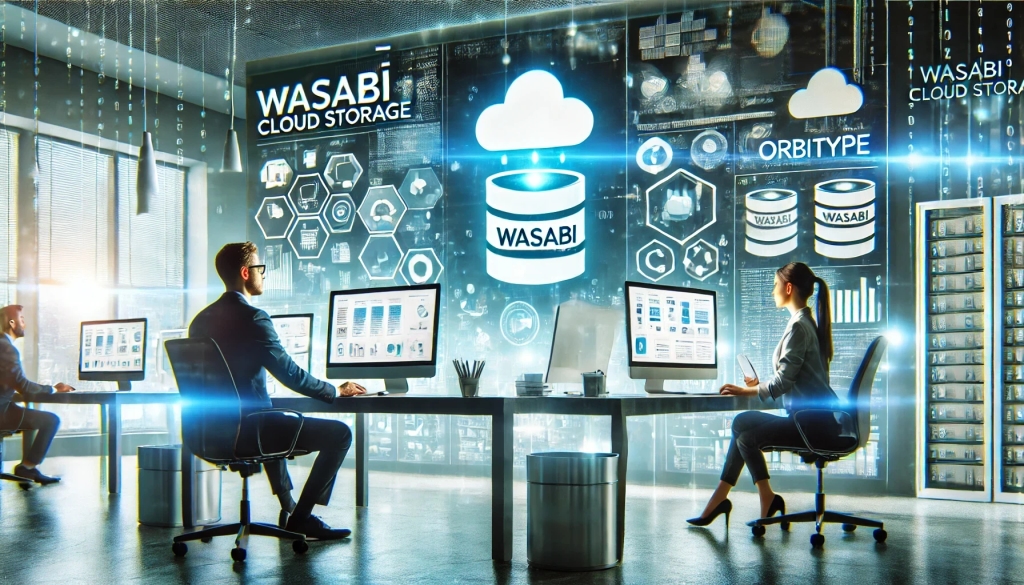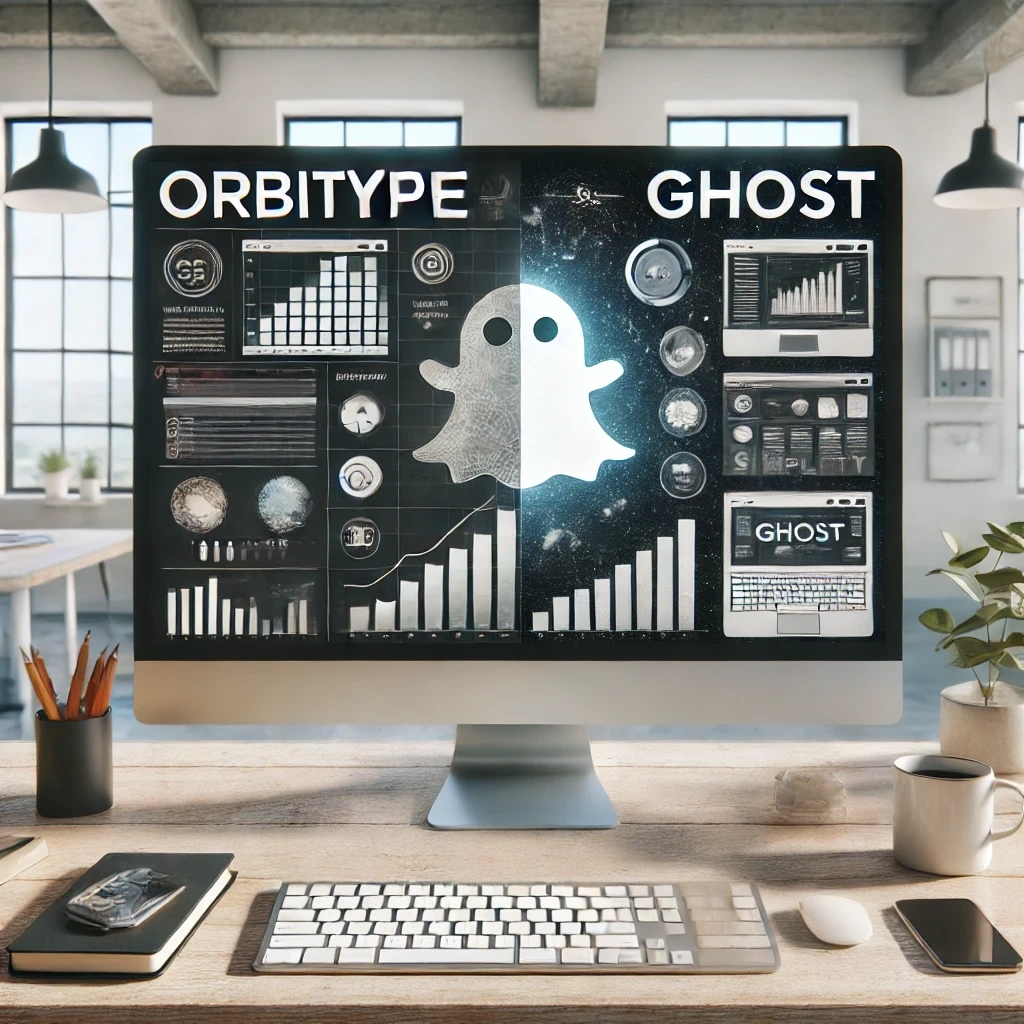How ECM Systems Improve Document Security and Access Control

Introduction
Securing sensitive information has become a critical priority for businesses of all sizes. With the increasing reliance on digital content and tools, safeguarding documents and ensuring proper access control are essential steps in protecting data integrity and privacy. An enterprise content management system (ECM) offers a comprehensive solution, enabling organizations to enhance their document security strategies effectively.
Whether you run a small company or a large organization, an ECM system can be a game-changer for your business processes. Let’s explore how ECM systems can protect your data, improve regulatory compliance, and ensure your business stays ahead of security threats.
What Are ECM Systems?
An enterprise content management system (ECM) is a software platform designed to manage, store, and organize digitized documents and content. Think of it as a central hub where all your important files—from contracts and invoices to reports and presentations—are stored securely and accessed only by authorized personnel.
But ECM systems go beyond basic document storage. They provide features like document capture, workflow automation, version control, and advanced security settings that make them indispensable for modern businesses. With ECM, organizations can streamline operations while reducing the risk of unauthorized access or data loss.
Why Document Security Matters
Every year, businesses lose millions due to data breaches. From leaked contracts to stolen customer information, the financial and reputational costs can be devastating. Here’s why prioritizing document security is essential:
Compliance with Regulatory Requirements: Governments worldwide have implemented stringent data protection laws, such as GDPR and HIPAA. Failing to comply can result in hefty fines and legal issues.
Protecting Sensitive Information: Documents often contain confidential data—like financial details, employee records, or trade secrets—that must remain secure.
Maintaining Customer Trust: A data breach can erode trust, making clients hesitant to continue working with your business.
With these challenges in mind, ECM systems are increasingly becoming a necessity for organizations that want to safeguard their manual documents and move toward digital transformation.
How ECM Systems Enhance Data Privacy
One of the most critical aspects of document security is data privacy. ECM systems are built with advanced features to ensure that sensitive information is protected at all times.
Encryption
ECM systems use encryption to secure documents during storage and transmission. This means even if someone intercepts the data, it will be unreadable without the proper decryption key.Retention Policies
Retention policies help organizations control how long documents are stored. For example, sensitive files can be automatically deleted after a specific period, reducing the risk of unauthorized access to outdated documents.
Audit Trails
Audit trails record every action taken on a document, including who accessed it, when, and what changes were made. This creates transparency and accountability, making it easier to detect unauthorized activities.
Role-Based Permissions and Access Control
Access control is one of the most powerful features of an ECM system. Unlike traditional file storage systems, ECM platforms allow organizations to implement role-based access control (RBAC).
Granular Permissions
Permissions can be set at a very detailed level, ensuring that users only have access to the documents they need. For instance, a junior employee might only be able to view certain files, while a manager can edit or approve them.
Role Assignments
Employees can be assigned roles, such as “Editor,” “Viewer,” or “Administrator.” Each role comes with predefined access levels, reducing the chances of accidental or intentional data breaches.
Access Logs
Every time a document is accessed, ECM systems log the event. These logs provide a clear record of who accessed what and when, ensuring effective user authentication and making it easier to identify unusual activity.
Key Document Security Features in ECM Systems
Version Control
Have you ever lost track of which version of a document is the most up-to-date? Version control ensures every change is tracked, so you can always revert to an earlier version if needed. This is particularly useful for managing complex document lifecycles where multiple edits happen simultaneously.
Secure File Sharing
Sharing files with clients or team members is common, but it can be risky. ECM systems let you share files securely through password-protected links or time-restricted access, ensuring safer real-time collaboration.
Disaster Recovery
Accidents and cyberattacks can happen, but an ECM system’s disaster recovery features act as a safety net. By automatically backing up your files, you can recover your data quickly and continue operations with minimal disruption.
These features work together to provide comprehensive protection for your organization’s most valuable assets: your documents.
Benefits of ECM Systems for Businesses
Enhanced Collaboration
Teams can work together seamlessly with centralized document access and version control, ensuring everyone stays on the same page.
Scalability
ECM systems grow with your business, accommodating more documents and users as needed without compromising performance.
Business Continuity
Disaster recovery features ensure your documents remain accessible even during unexpected events, such as system failures.
Cost Efficiency
Digitizing files eliminates the need for managing paper documents, saving money on physical storage while streamlining workflows.
Faster Decisions
Centralized data allows decision-makers to quickly retrieve the information they need, improving response times and outcomes.
Choosing the Right ECM System
Selecting the right ECM system for your organization is a critical decision that can significantly impact your operations and security.
To start, look for a platform that integrates seamlessly with your existing tools and workflows. This ensures a smooth transition and minimizes disruptions to your business processes. Additionally, customization options are essential—every organization has unique needs, and a system that allows you to tailor permissions, workflows, and settings will better align with your goals.
Security is another vital factor. Cybersecurity threats are constantly evolving, so opt for a system that provides regular updates to address new vulnerabilities. This proactive approach helps keep your data safe from potential breaches.
At Orbitype, we offer an enterprise content management solution that prioritizes security, flexibility, and ease of use. Our platforms are designed to grow with your business, helping you streamline document management while safeguarding your critical data.
Conclusion
In an era where data breaches and unauthorized access are on the rise, securing your documents should be a top priority. ECM systems offer a powerful way to improve document security, enforce access control, and ensure data privacy. From encryption and role-based permissions to audit trails and secure file sharing, these systems provide comprehensive protection for your digital content.
By investing in an ECM system, you’re not just protecting your business from potential threats—you’re also setting the stage for smoother operations, better compliance, and long-term success. Ready to take the next step? Explore Orbitype’s ECM solutions and discover how we can help your organization thrive.
Read more

Integrating Orbitype with Nuxt.js for Optimal Performance and SEO
Leveraging Orbitype, a robust headless CMS, with Nuxt.js, a Vue.js framework, provides developers a powerful solution for building fast, SEO-optimized websites. This blog post explores how the integration of Orbitype and Nuxt.js harnesses the benefits of static site generation (SSG) and server-side rendering (SSR), thanks to Orbitype's API-driven content management system.

Automating Content Workflows with Orbitype’s Custom Solutions
Discover how Orbitype's custom CRM and ERP solutions revolutionize content workflows. Automate processes, reduce manual tasks, and improve productivity for software development agencies with tailored tools for seamless collaboration and efficiency.

Nuxt vs Next: Which Framework Works Best with Headless CMS?
Compare Nuxt.js and Next.js to find the best frontend framework for your Headless CMS. Discover which offers better performance, scalability, and flexibility for dynamic web projects.

Seamless Data Management: Integrating Wasabi Cloud Storage with Orbitype
Boost your CMS performance with Wasabi Cloud Storage and Orbitype integration. Learn how this cost-effective, scalable solution enhances data management and delivers exceptional results.

Leveraging Orbitype for Efficient Content Management in E-Commerce
nhance your e-commerce performance with Orbitype CMS. This scalable headless CMS simplifies content management, boosts SEO, and seamlessly integrates with Shopify, WooCommerce, and Magento for dynamic, flexible solutions.

Best Headless CMS Solutions for Portfolio and Personal Websites
Showcase your work with ease using Orbitype—the ultimate Headless CMS for portfolio and personal websites. Enjoy seamless integration, powerful customization, and SEO-friendly features designed for creators and developers.

How Educational Institutions Benefit from Headless CMS for Online Learning
Enhance online learning with a Headless CMS. Discover how centralized content management, scalability, and seamless multi-channel access can transform educational platforms.

Mastering Third-Party Integrations with a Headless CMS for Efficient Workflows
Streamline workflows and scale your business with seamless third-party integrations using Orbitype's flexible headless CMS—designed for efficiency, automation, and growth.

Top 5 Alternatives to WordPress for Modern Developers in 2025
Discover the top WordPress alternatives for 2025, including Orbitype, Contentful, and Strapi. Explore modern CMS platforms offering scalability, flexibility, and cutting-edge tools for developers.

Building Progressive Web Apps (PWAs) with Orbitype
Explore how Orbitype enhances Progressive Web Apps (PWAs) with optimized performance, offline capabilities, and seamless content management for superior user experiences.

SQL or NoSQL: What's Best for Mobile Applications Using Orbitype?
Explore Orbitype, the ultimate headless CMS for React developers, offering seamless content management, enhanced performance, and flexibility to create dynamic web applications with ease. Learn how Orbitype simplifies workflows and boosts productivity.

Comparing Orbitype and Ghost: Best CMS for Blogging in 2025
Compare Orbitype and Ghost to find the best CMS for blogging in 2025. Discover which platform suits your goals, from scalability to simplicity and dynamic content

TypeScript vs. JavaScript
Discover the synergy between TypeScript and JavaScript for web development. Learn how Orbitype supports Nuxt CMS, headless CMS for Nuxt, and future-ready digital trends.

Security and Compliance in Headless CMS: Focus on Orbitype
Explore headless CMS security with Orbitype: advanced authentication, data encryption, and compliance with GDPR & CCPA. Learn best practices for secure CMS operations.

10 Tips for Optimizing Core Web Vitals in Headless CMS Websites
Discover 10 actionable tips to optimize Core Web Vitals for Headless CMS websites. Improve performance, SEO, and user experience with these essential strategies.

How Orbitype Compares to Headless CMS Leaders in 2025
Struggling to choose the best CMS? Discover how Orbitype compares to headless CMS leaders in 2025, solving complexity and scalability challenges with ease. Try Orbitype!

CMS for Vue.Js - Orbitype Headless CMS
Explore Orbitype, the best Headless CMS for Vue.js, offering seamless API integration, dynamic content management, and unmatched performance for interactive front-end development.

CMS for Nuxt - Orbitype Headless CMS
Optimize your Nuxt.js projects with Orbitype, the API-first Headless CMS offering scalable content management, multimedia repositories, and enhanced SEO for modern web applications.

Building High-Performance Vue Apps with a Headless CMS
Discover how to optimize Vue.js apps with a Headless CMS for high performance, scalability, and SEO. Learn best practices and tools for creating dynamic web apps.

How Headless CMS Empowers Omnichannel Marketing Strategies
Boost your omnichannel marketing strategy with a Headless CMS. Centralize content management, deliver personalized customer experiences, and ensure consistency across platforms.

How to Scale Your Website with a Headless CMS for High Traffic
Scale your website effortlessly with a headless CMS like Orbitype—achieve faster load times, seamless scalability, and reliable performance during high-traffic surges

CMS for React - Orbitype Headless CMS
Orbitype is the ideal CMS for React developers, combining seamless API integration, flexible content management, and scalability to create fast, dynamic, and customizable web applications effortlessly.

Next.js vs Gatsby: Which Works Best With a Headless CMS?
Choosing between Next.js and Gatsby can be challenging when working with a Headless CMS. This guide breaks down their strengths and helps you decide which framework works best for your dynamic or static content needs.

Using Orbitype for Large-Scale Content Migration
Content migration is a critical process in the lifecycle of digital platforms. It involves transferring content from one system to another, often from a legacy CMS to a more modern, flexible system like Orbitype. This process can be necessary for various reasons, including upgrading technology, improving user experience, consolidating multiple websites, or enhancing content management capabilities. Orbitype, a powerful headless CMS, offers unique features that make large-scale content migration efficient and seamless. This blog will guide you through the entire migration process, from pre-migration planning to post-migration activities.